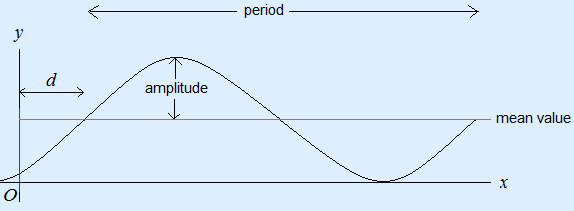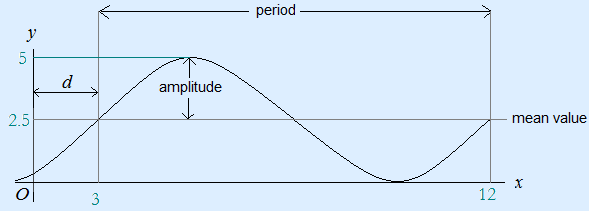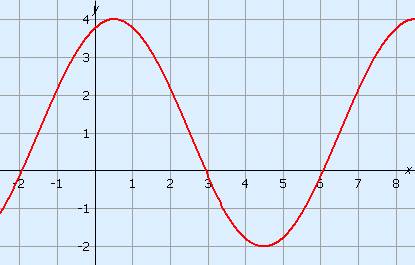Trigonometry » Sinusoid
See also periodic relation.
| The general formule for a sinusoid is: y = a + b sin(c(x – d)) |
With:
a the mean value
b the amplitude
c 2π/period
d the x-value of a point for which the graph rises through the mean

Example 1
Make the formula for the following sinusoid:

The mean value is (5 + 0) : 2 = 2.5.
The amplitude is (5 – 0) : 2 = 2.5.
The period is 12 – 3 = 9. The value of c will be 2π/9.
The graph rises through the mean value at point (3, 2.5). Therefore d = 3.
The formula of the sinusoid will be: y = 2.5 + 2.5 sin(2π/9(x – 3))
Example 2
Make the formula for the following sinusoid:

The mean value is (4 + –2) : 2 = 1.
The amplitude is 4 – 1 = 3.
The period is 6 – –2 = 8. The value of c will be 2π/8 = π/4.
And d = –1.5 or 6.5. It does not matter which of the two values you use.
The formula for the sinusoid will be: y = 1 + 3 sin(π/4(x – 6.5))
or: y = 1 + 3 sin(π/4(x + 1.5))